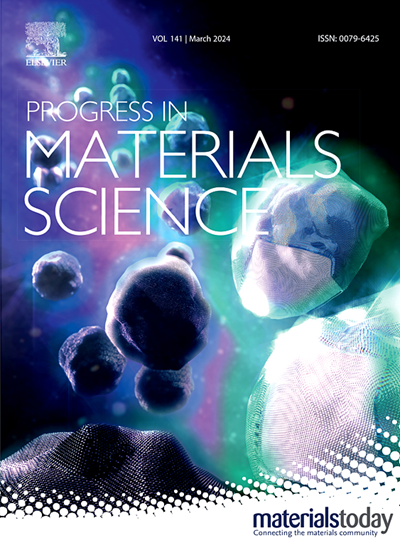Bioinspired waterproof, breathable materials: How does nature transport water across its surfaces and through its membranes?
IF 40
1区 材料科学
Q1 MATERIALS SCIENCE, MULTIDISCIPLINARY
引用次数: 0
Abstract
The controlled transport of water vapor and liquid water across membranes is a crucial biological process observed in natural systems for over 460 million years. Through evolution, plants have developed various methods to regulate water gradients between their internal structures and the external environment. The primary natural mechanisms used to modulate the water gradient effectively involve integrating specialized organs, like those responsible for gas exchange, in tandem with developing impermeable outer surfaces. Several applications in engineered materials – including rainwear, wound dressings, textiles, packaging, and building materials require breathability and waterproofing properties. Breathable materials can enable water vapor movement within their structure, while waterproof materials effectively resist the penetration and absorption of liquid water. Developing materials that can simultaneously exhibit waterproofness, and breathability presents a significant scientific and engineering challenge due to the inherent conflict between these properties. This review aims to delve into the physicochemical mechanisms governing plant water transport and establish a connection with developing bio-based and bio-inspired materials. We explore how plant components can give rise to hydrophobic, hydrophilic, porous, and responsively porous bio-inspired materials, addressing challenges encountered in the waterproof-breathable textile industry.
仿生防水透气材料:大自然是如何将水输送到其表面和膜上的?
水蒸气和液态水在膜上的控制运输是一个重要的生物过程,在自然系统中已观察到超过4.6亿年。在进化过程中,植物已经发展出各种方法来调节其内部结构和外部环境之间的水分梯度。用于有效调节水梯度的主要自然机制包括整合专门的器官,如负责气体交换的器官,以及发展不渗透的外表面。工程材料中的一些应用-包括雨衣,伤口敷料,纺织品,包装和建筑材料需要透气性和防水性能。透气材料可以使水蒸气在其结构内部运动,而防水材料可以有效地抵抗液态水的渗透和吸收。由于这些特性之间的内在冲突,开发同时具有防水和透气性的材料提出了重大的科学和工程挑战。本文旨在深入探讨植物水分运移的物理化学机制,并将其与生物基和仿生材料的发展联系起来。我们探索植物成分如何产生疏水、亲水、多孔和响应多孔的仿生材料,解决防水透气纺织行业遇到的挑战。
本文章由计算机程序翻译,如有差异,请以英文原文为准。
求助全文
约1分钟内获得全文
求助全文
来源期刊

Progress in Materials Science
工程技术-材料科学:综合
CiteScore
59.60
自引率
0.80%
发文量
101
审稿时长
11.4 months
期刊介绍:
Progress in Materials Science is a journal that publishes authoritative and critical reviews of recent advances in the science of materials. The focus of the journal is on the fundamental aspects of materials science, particularly those concerning microstructure and nanostructure and their relationship to properties. Emphasis is also placed on the thermodynamics, kinetics, mechanisms, and modeling of processes within materials, as well as the understanding of material properties in engineering and other applications.
The journal welcomes reviews from authors who are active leaders in the field of materials science and have a strong scientific track record. Materials of interest include metallic, ceramic, polymeric, biological, medical, and composite materials in all forms.
Manuscripts submitted to Progress in Materials Science are generally longer than those found in other research journals. While the focus is on invited reviews, interested authors may submit a proposal for consideration. Non-invited manuscripts are required to be preceded by the submission of a proposal. Authors publishing in Progress in Materials Science have the option to publish their research via subscription or open access. Open access publication requires the author or research funder to meet a publication fee (APC).
Abstracting and indexing services for Progress in Materials Science include Current Contents, Science Citation Index Expanded, Materials Science Citation Index, Chemical Abstracts, Engineering Index, INSPEC, and Scopus.
 求助内容:
求助内容: 应助结果提醒方式:
应助结果提醒方式:


